Program Resources
Since 2022, The Franklin Institute has convened and led a national network of ten informal science institutions (ISIs) in recruiting and training community-based organizations (CBOs) and amateur astronomers (AAs) to deliver Mission2Mars programming to families and youth in grades 4-8. The links in the sections below are resources that the Mission2Mars cohorts have utilized throughout the program lifecycle.
Explore our ASTC 2024 poster, Catalyzing Community Partnerships and Leveraging Content Expertise to Connect the Public with NASA's Artemis Program.
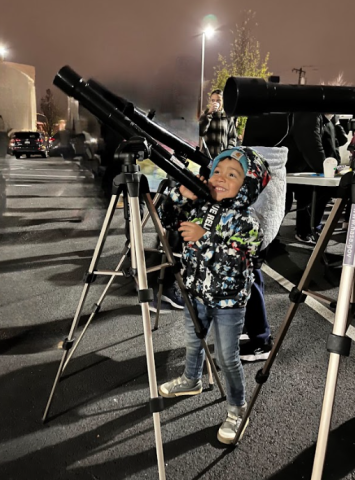
A star party attendee observes the sky at Nueva Esperanza in Philadelphia.
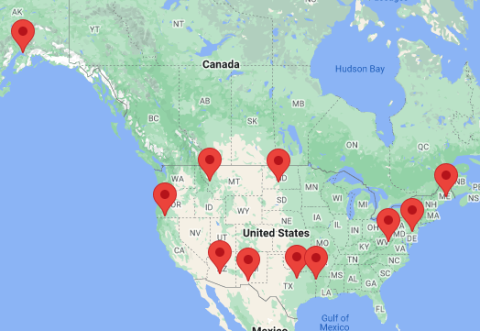
Map of participating informal science institutions (2022-2024).
In 2022, a cohort of five informal science institutions (ISIs) were trained in the Mission2Mars content and program delivery model. Each ISI recruited and trained five community-based organizations (CBOs) and fifteen amateur astronomers (AAs). Each CBO facilitated four community events resulting in the delivery of twenty events in each community and 100 community events nationwide. In 2023, a second cohort of five more ISIs and accompanying CBOs and AAs were recruited and trained in the content and program delivery model while Cohort One trained in additional content and facilitated their second year of events, resulting in 200 community events nationwide. In the third and final year, cohorts one and two continued to deliver twenty events each in collaboration with their trained CBOs and AAs for a total of 200 community events nationwide in the third year. In total, the Mission2Mars program will result in 500 community astronomy programs nationwide over its three-year lifespan.
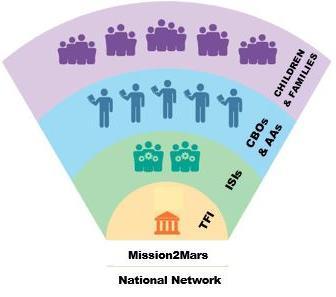
Mission2Mars National Dissemination Plan.
A goal of this project is to develop long-lasting relationships between informal science institutions, community-based organizations, and amateur astronomers, with the aim of operating independently of The Franklin Institute by the final year of the project and with the hope of fostering collaboration on future projects.
The following resources are guides created by The Franklin Institute for building sustainable relationships between project partners.
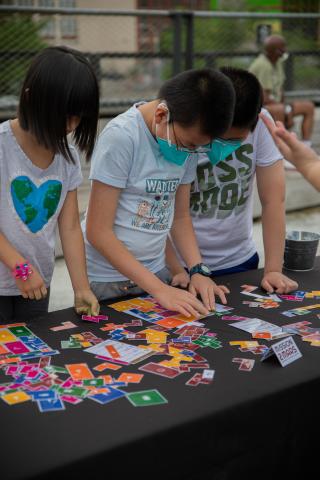
Youth participating in the Priority Packing activity in Philadelphia.
This three-year program offered a cascading series of professional development experiences that equipped ISIs, CBOs, and AAs with the skills and resources to develop and deploy high-quality astronomy engagement experiences that center on NASA’s Artemis program.
Amateur astronomers facilitate stargazing at events, while CBO partners lead NASA-designed, space-centered activities for families. The resources below are a sample of the content provided to cohorts to deliver at their events. These activities are designed for anyone to facilitate and can be delivered anywhere, including in an informal setting like afterschool programming.
Event Theme: The Moon
Event Theme: Space Exploration
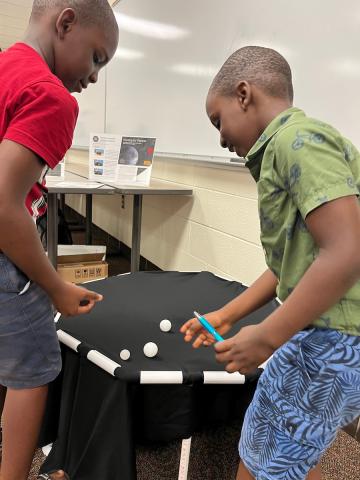
Youth participating in the Gravity Well activity via Gateway to Science.
Each informal science institution collaborated with local community-based organizations and amateur astronomers to facilitate a goal of 20 Mission2Mars themed events annually. The goals of these events were not only centered around educating and inspiring attendees about space and NASA’s Artemis program, but also fostering connections between the ISIs, participating CBOs, and amateur astronomers. Participants used the following resources to plan their events.

Moon Phases activity.
Throughout the program lifespan, The Franklin Institute has partnered with Education Development Center to evaluate the efficacy of the program goals. The following are takeaways from the yearly M2M evaluations. Mission2Mars programming will continue through January 2025. Program evaluation and reporting will wrap up by August 2025, after which summative data will be available.
M2M PROGRAM IMPACT
Between 2022 and 2023, 10 informal science institutions across the country worked with 68 community-based organizations.
These community-based organizations worked with 58 amateur astronomers to deliver 305 Mission 2 Mars events to the public.
“We have gained key contacts not only with astronomers
but also with other community organizations who we worked
within order to make our events possible. Our participation in the
Mission2Mars program has really helped us tap into our community.”
– Community-Based Organization Staff Survey Respondent
Over 22,863 members of the public attended these events.
“[I will remember most that] my kids absolutely adored it!
...They had so much fun! Thanks for making science cool!”
− Event Survey Respondent
Between all the organizations, over 200 educators were trained in the Mission2Mars content by their informal science institution.
“I've enjoyed increasing my own knowledge about space and
gaining the ability to competently / confidently share that knowledge
with library patrons. It has been especially exciting to teach about the sun
and solar eclipses given the October eclipse and the eclipse coming up in April.
I'm glad we can be a source of reliable information and safe eclipse viewing
glasses, thanks to this program.”
– Community-Based Organization Staff Survey Respondent
ANNUAL EVALUATION REPORTS
Youth at an M2M event via Green Bank Observatory.
Questions about the Mission2Mars program? Get in touch with us at mission2mars@fi.edu.
